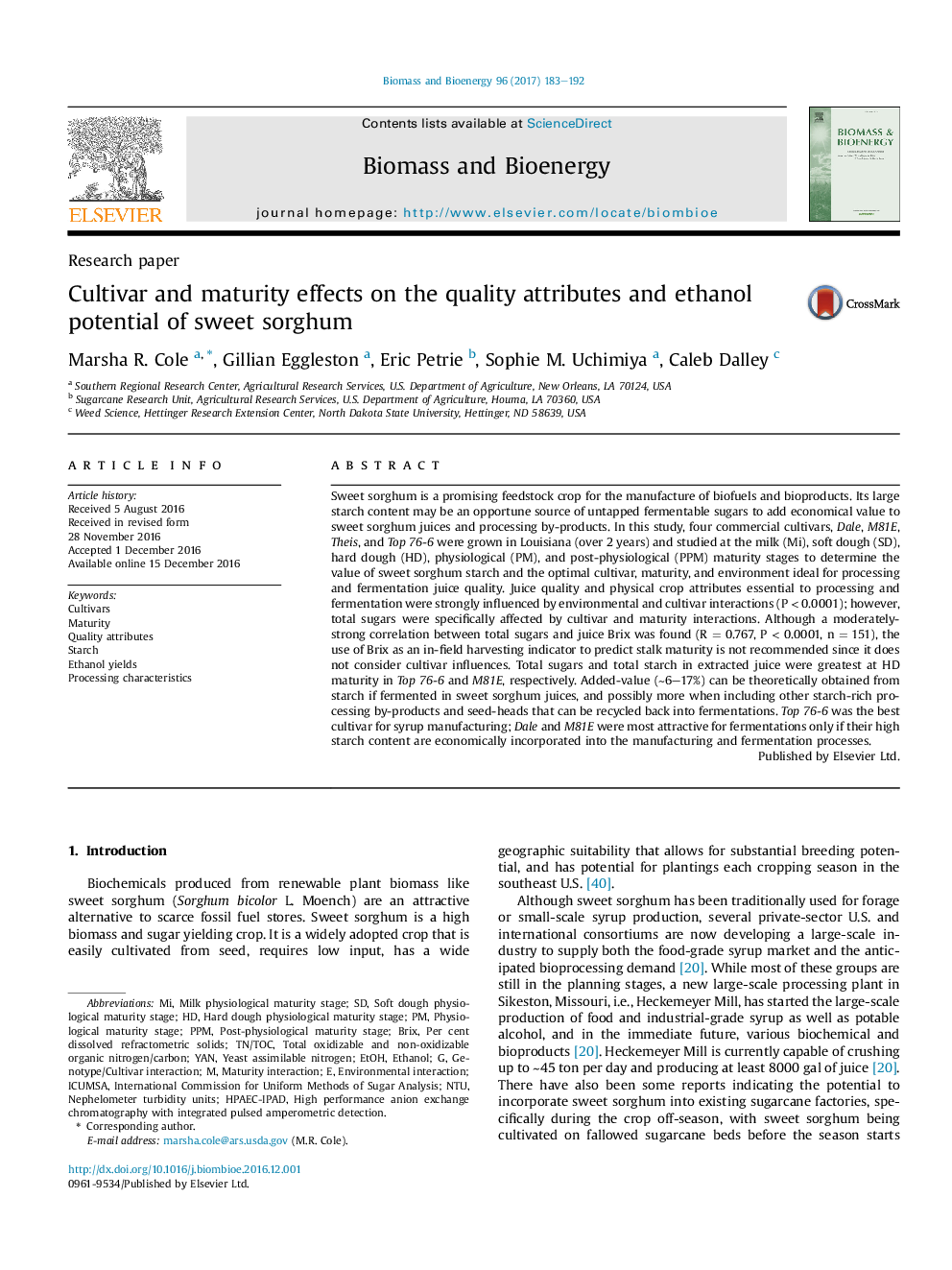| Article ID | Journal | Published Year | Pages | File Type |
|---|---|---|---|---|
| 4996418 | Biomass and Bioenergy | 2017 | 10 Pages |
Abstract
Sweet sorghum is a promising feedstock crop for the manufacture of biofuels and bioproducts. Its large starch content may be an opportune source of untapped fermentable sugars to add economical value to sweet sorghum juices and processing by-products. In this study, four commercial cultivars, Dale, M81E, Theis, and Top 76-6 were grown in Louisiana (over 2 years) and studied at the milk (Mi), soft dough (SD), hard dough (HD), physiological (PM), and post-physiological (PPM) maturity stages to determine the value of sweet sorghum starch and the optimal cultivar, maturity, and environment ideal for processing and fermentation juice quality. Juice quality and physical crop attributes essential to processing and fermentation were strongly influenced by environmental and cultivar interactions (P < 0.0001); however, total sugars were specifically affected by cultivar and maturity interactions. Although a moderately-strong correlation between total sugars and juice Brix was found (R = 0.767, P < 0.0001, n = 151), the use of Brix as an in-field harvesting indicator to predict stalk maturity is not recommended since it does not consider cultivar influences. Total sugars and total starch in extracted juice were greatest at HD maturity in Top 76-6 and M81E, respectively. Added-value (â¼6-17%) can be theoretically obtained from starch if fermented in sweet sorghum juices, and possibly more when including other starch-rich processing by-products and seed-heads that can be recycled back into fermentations. Top 76-6 was the best cultivar for syrup manufacturing; Dale and M81E were most attractive for fermentations only if their high starch content are economically incorporated into the manufacturing and fermentation processes.
Keywords
Related Topics
Physical Sciences and Engineering
Chemical Engineering
Process Chemistry and Technology
Authors
Marsha R. Cole, Gillian Eggleston, Eric Petrie, Sophie M. Uchimiya, Caleb Dalley,
